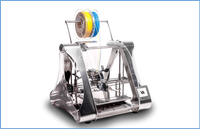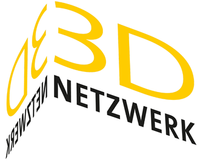Material Extrusion: FLM
Material extrusion is one of the most prominent Additive Manufacturing processes, and the material extrusion type of 3D printers is most commonly available and at a low budget. Fused layer modeling/Fused deposition modeling is a common material extrusion process. The technology behind FDM was invented in the 1980s by Scott Crump, co-founder and chairman of Stratasys Ltd., a leading manufacturer of 3D printers. Down the line other organizations have adopted technologies similar to FDM.
The company MakerBot was founded on a similar technology known as Fused filamen fabrication (FFF). In 2009, the first FDM patent had expired allowing people commercial, do it yourself and open-source applications of 3D printing technology.
Working principle of FLM
In FLM, a spool of material filament is fed into a heated nozzle that melts the filament and deposits the material on the build plate along a predetermined path. The material filament on the build plate then cools down and solidifies into a 3D object. The print head is equipped with a heated nozzle and the temperature of the nozzle can be set as per the material requirements. A motor pushes the filament material through the heated nozzle, melting it. The print head moves over specific coordinates and deposits the molten material on the built plate at precise locations. As the nozzle is moved over the print bed in the required geometry, it deposits a thin bead of extruded plastic to form each layer. The plastic hardens immediately after being squirted from the nozzle and bonds to the layer below. Once the complete layer is printed, the built platform lowers by some distance and the process is repeated, thus building the part layer by layer. The layers fuse together as the material is in a melted state. Support structures are required for overhanging geometries in the part, which should be removed once the part has been fully printed. For complex structures, water-soluble support structures can be used. The parts can usually be used directly after printing, but most require some post-processing such as surface smoothing, priming, and painting, etc.
Materials and applications
The materials used in FLM are thermoplastics such as ABS, PLA, PETG, Nylon, etc. The process is used to produce thermoplastic parts and prototypes. The accuracy and speed of FLM are low as compared to other AM processes and the quality of the final part is limited due to the nozzle diameter. Smaller nozzle diameter results in better print quality but longer print time. Whereas larger nozzle diameter results in shorter print time but relatively inferior quality. FLM is a very cost-effective process, mainly used for low-cost prototyping, building proof-of-concept models and design verification. It is widely used for electrical housings, enclosures, form and fit testing, jigs, and fixtures. FLM is also applicable in producing end-user parts and specialized manufacturing tools. Some of the thermoplastic materials are food safe and FDA approved, and thus can be used in food and packaging industry.
Advantages
• Widespread and inexpensive.
• Low-cost Functional prototypes.
• Low turnaround time for small parts.
Disadvantages
• Dimensional accuracy is limited by nozzle diameter.
• Parts are anisotropic in nature.




